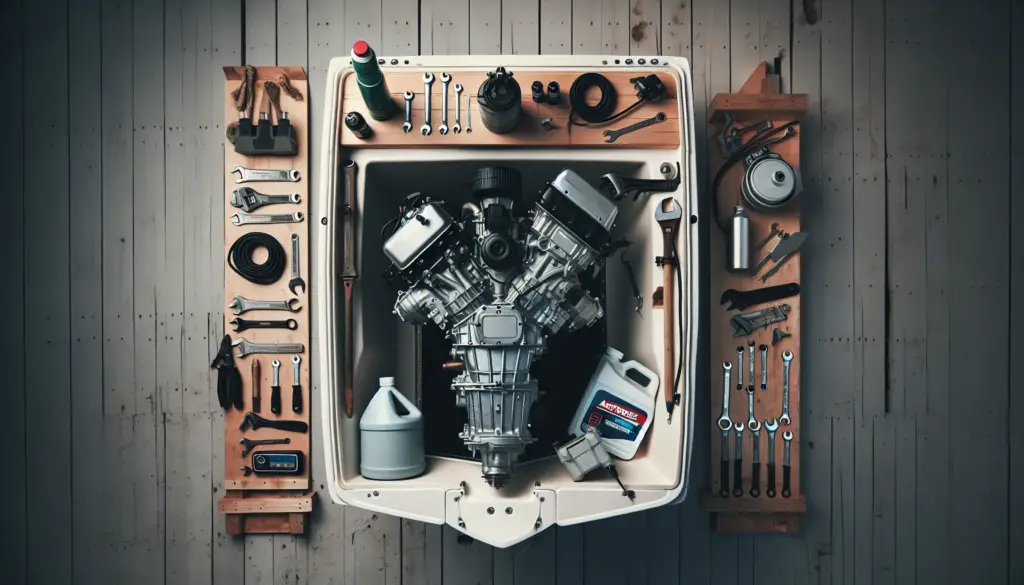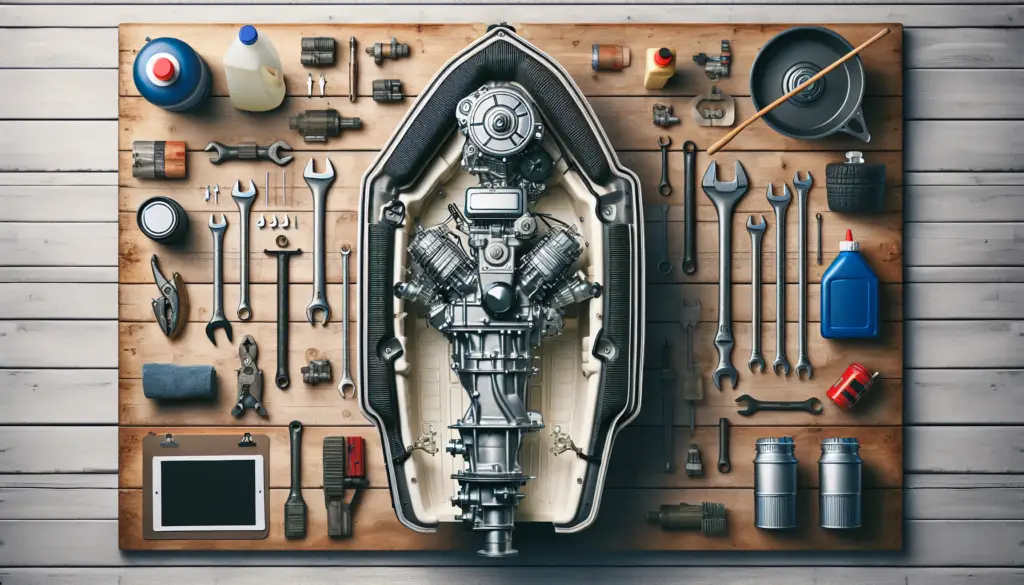You’re a boat owner and as such, you know that winter can be a treacherous season for your treasured possession, if not handled properly. This article gives the finest methods on how to winterize your boat engine. We know you care about your boat ride and want to keep it in top-notch condition, that’s why you’ll find this read filled with the right balance of practical advise and expert know-how specifically catered to that. “Best Practices For Boat Engine Winterization” not only caters to your need for an efficiently running machine but also to your budget as it seeks to elongate the lifespan of your engine through these practices. So sit back, relax, and take notes as you prepare your boat for a safe and secure winter.
Understanding the importance of boat engine winterization
Boat winterization is one of those tasks that might seem tedious and unnecessary, but it’s absolutely crucial for maintaining the health and longevity of your boat’s engine. The winter months can be harsh on a boat – especially in areas where subzero temperatures are common. If you’re not careful, the freezing cold could result in costly damage to your boat’s engine.
Effects of neglecting boat engine winterization
Without proper winterization, your boat engine undergoes unnecessary stress due to freezing temperatures. It’s not just about the engine stalling or getting frozen. Neglected winterization can also lead to cracked engine blocks, corrosion, and damage to other crucial components. Damaged seals or gaskets can also result in oil or coolant leaks. These repairs may end up costing you an arm and a leg, possibly even exceeding the cost of a new engine altogether.
Benefits of proper boat engine winterization
On the other hand, properly winterizing your boat engine helps ensure it has a longer lifespan. It protects the engine from corrosion, fractional damage and condensation issues. It also ensures a smooth start up come springtime. If you want your boat to be ready for the next boating season without any hassles, winterization is the way to go.
Preparation for Boat Engine Winterization
Begin with the right preparation. It’s a good idea to gather all the necessary tools and materials before starting the winterization procedure.
Gathering all necessary tools and materials
Some essential tools for winterizing your boat engine include a wrench, screwdriver, engine oil, oil filter, antifreeze, fuel stabilizer, fogging oil and engine muffs. You may also need a bucket, towels and an oil extractor depending on your boat engine’s specifics. It’s easier to have these items on hand before you begin to save you time.
Choosing the perfect location and timing
The ideal location for boat winterization would be a dry, cool place with a level floor – a garage or boatyard would be perfect. The timing depends on the local climate, but a good rule of thumb is to complete the process before the first hard freeze of winter.
Familiarizing with the boat’s engine and its components
To execute the winterization process safely and efficiently, it helps to know your engine and its components really well, including the fuel system, cooling system, and oil system. Understand how they function and how they should be cared for during the winter months.

Draining the engine
Why it’s necessary to drain the engine
Draining the engine is crucial to prevent any remaining water in the engine from freezing and causing damage. This includes draining engine oil, fuel, and coolant.
Steps to properly drain the engine
Begin with running the engine to warm it up – a warm engine allows oil to drain faster and more completely. Following this, disconnect the battery, remove the oil filter, then proceed with draining the engine oil and coolant. It’s wise to replace the oil filter during this time as well.
Proper disposal of used engine oil and coolant
Disposing of used oil and coolant is much more than about just getting rid of it. It matters how and where you dispose of these fluids sometimes classified as hazardous waste. Many local recycling facilities and auto-parts stores offer oil and coolant recycling services.
Cleaning and Flushing the Engine
Importance of a clean engine before winterization
A clean engine is less likely to develop rust or corrosion over the winter months. Removing old oil, coolant and fuel also removes contaminants that could potentially degrade engine components over time.
Methods of flushing the engine
Flushing the engine involves running clean, fresh water through the engine’s cooling system to wash out salt, dirt and corrosion. Attach a flushing muffs to the water intake on the lower unit, connect a garden hose, then run the engine.
After-flushing engine care
After flushing the engine, it’s important to let it dry out thoroughly before storing it. Run the engine to let it heat up and dry out on its own. Then, apply fogging oil to protect the engine internals from moisture and corrosion.

Applying Antifreeze in the Engine
Selecting the right coolant/antifreeze
There are many types of antifreeze available in the market, but not all of them are suitable for boat engines. Marine-grade, non-toxic antifreeze is the recommended choice.
Procedures for applying antifreeze in the engine
You can introduce antifreeze into the engine via the flushing muffs and garden hose method mentioned before. Ensure the antifreeze reaches all areas of the cooling system.
Confirming adequate antifreeze distribution
Watch for a steady stream of antifreeze coming out the engine’s exhaust. This indicates the antifreeze has circulated throughout the entire cooling system.
Fuel system care
Why fuel treatment is vital in engine winterization
Fuel treatment is an important part of winterization because it helps to prevent the formation of harmful gum, varnish, and other deposits in the fuel system during storage.
Correct procedure to treat the fuel system
Add a dose of fuel stabilizer to the gas tank, then fill the tank with fresh fuel to about 95% capacity. Run the engine for 10-15 minutes to circulate the treated fuel through the fuel system.
Ensuring proper tank storage and fuel line condition
Keep the fuel tank almost full during storage to minimize the chance of condensation forming inside the tank. Check the fuel lines before storage for any sign of cracks or damage, and replace if necessary.
Battery maintenance
The relevance of battery care in boat winterization
A properly-maintained battery extends its life span and ensures it will hold a charge until spring.
Steps to prepare battery for long-term storage
Disconnect the battery, give it a good clean, top up the water level if necessary, and fully charge it. Store the battery in a cool, dry place, off the floor, and away from gas cans, or steel tools.
Possible hazards of neglecting battery maintenance
Ignoring your boat’s battery during winter can result in diminished power capacity, short lifespan, and even complete failure.
Mold & Mildew Protection
Ways mould and mildew can harm your boat engine
Mould and mildew not only create foul smells, they can also cause allergic reactions. More critically, they could potentially damage the electrical and metallic parts of your boat’s engine.
Steps to prevent mold and mildew growth
Clean your boat thoroughly, remove any organic material, and ensure your boat is absolutely dry before storing it for the winter. Use desiccants or dehumidifiers to absorb excess moisture.
Maintaining a moisture-free environment in the engine area
Ensuring good ventilation in the engine area is a great way to deter mold and mildew growth. You could crack open the engine compartment or use a fan to improve ventilation.
Covering and storing your boat safely
Selecting the proper boat cover
Choose a cover specifically designed for your boat’s model and type. A good boat cover will protect your boat from dust, dirt, UV rays, falling leaves, bird droppings, and harsh weather conditions.
Procedure to safely cover the boat
Ensure the boat is clean and dry before you cover it. Position the cover properly and secure it tightly with straps, ropes, or bungee cords.
Choosing a suitable storage location for winter
Store your boat in a dry, sheltered place protected from harsh weather. Indoors is always best. If you don’t have indoor storage, a boatyard or storage facility could serve the purpose.
Reviewing proper Engine Winterization
Regular assessment of winterization procedures
Stay proactive and check on your winterized boat periodically. Look out for signs of trouble like pests, leaks or condensation.
Tips to maintain the condition of the winterized boat engine
Keep rodents away – they can chew on your boat’s wiring. Loosen the drive belts to prevent them from cracking under tension. Lubricate moving parts to prevent them from cease.
Preparing for de-winterization once spring arrives
Before launching your boat in spring, check all systems thoroughly. Change the engine oil, inspect hoses, belts, and clamps, clean or replace spark plugs, and confirm all electrical systems are working.
Winterizing your boat is necessary work to protect your investment. With the right measures and preparation, it’s a task that’s worthwhile. Here’s to being well-prepared for the winter and towards a hassle-free start come the next boating season.

